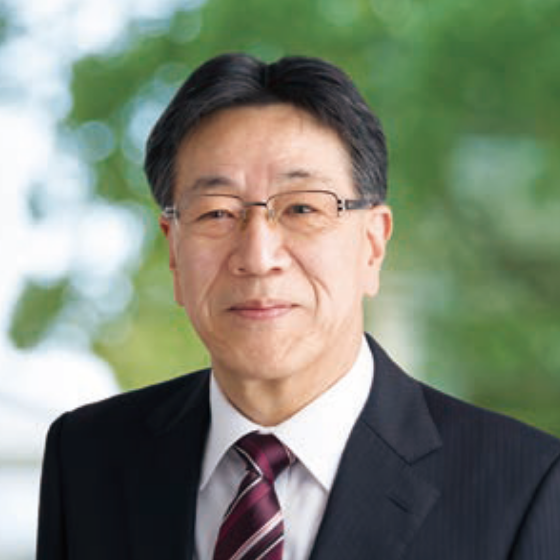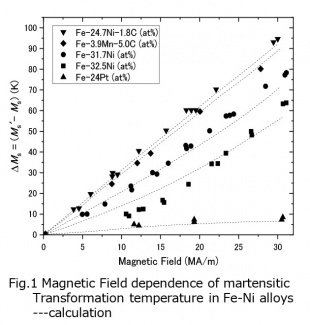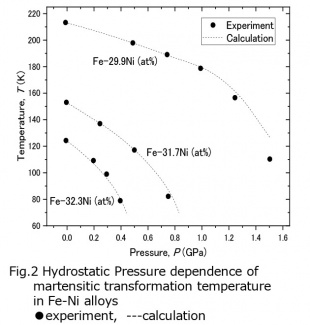- Home
- Faculty Members
- Department of Mechanical Engineering
- Tomoyuki Kakeshita
Faculty of Engineering
Department of Mechanical Engineering
- Key words
- Shape memory materials, steel materials, magnetic materials(magnets),super conducting materials, microstructure control, physical properties of structural functions,electron theory,first principles calculation

Doctor of Science / Professor
Tomoyuki Kakeshita
Education
Department of Physics, Faculty of Science, Hokkaido University,
Hokkaido University Graduate School of Science, Physics Master’s Program,
Osaka University Graduate School of Engineering Science, Department of Physics(Doctoral Program)
Professional Background
Research Associate, Assistant Professor/Associate Professor, Osaka University, Professor at Osaka University, Osaka University Educational Research Councilor, Dean of Engineering and Engineering Research, Member of the Management Council, Professor Emeritus of Osaka University /
President of The Japan Institute of Metals and Materials Award(2018)
Consultations, Lectures, and Collaborative Research Themes
Lectures and technical consultations from basic to applied (including manufacturing)on structural and functional materials. Crystallography and dynamic analysis by X-ray / neutron beam, and analysis/evaluation of electron microscope, SEM etc / band calculation.
Main research themes and their characteristics
「Effects of magnetic field and hydrostatic pressure on displacive transformation」
Displacive transformation, in particular martensitic transformation observed in many metals, alloys and ceramics is a first order transition and now widely exploited in smart materials as well as structural materials. In near future, these materials will be used under extreme conditions such as outer space, undersea, and underground. Despite of such expected requirements, there are few investigations related to phase transformation under extreme conditions ( high magnetic field, high hydrostatic pressure, cryogenic temperature, high stress and high vacuum etc. ).
Then, we are going to investigate systematically the effects of high magnetic field (60 T) and high hydrostatic pressure (100 GPa) on martensitic transformation. As a result, we find that both the magnetic field and hydrostatic pressure remarkably influence the martensitic transformation temperature. For instance, in an Fe-31.7at.%Ni alloy, the transformation temperature increases by about 75 K by the application of magnetic field of 32MA/m (40T) (Fig.1), while it decreases in an Fe-29.9at.%Ni alloy by 100 K by the application of hydrostatic pressure of 1.5 GPa (Fig.2). Taking these results into account, we derive a new formula which determines magnetic field and hydrostatic pressure dependences of martensitic transformation temperature. In addition, we derive a new model which can explain kinetics of martensitic transformation by introducing statistical thermodynamics to the nucleation process. Moreover, we find that the distribution of martensite plates is affected by magnetic field, meaning that morphology of martensite is controlled by magnetic field. Furthermore, we firstly find a magnetoelasitc transformation, in which the martensite phase exists only under magnetic field. We also find a giant strain (several %) induced by quite low stress in Fe-based ferromagnetic shape memory alloys.
「Magnetic transition in intermetallic compounds DyCu and DyAg」
Recently, much attention has been paid to intermetallic compound composed of rare earth elements and transition metals. They are candidate for new functional materials, especially, as magnet materials and magnetic refrigeration materials. A well-known example is powerful magnets of SmCo<sub>5</sub> and Nd<sub>2</sub>Fe<sub>14</sub>B. In these materials, the superior properties are caused by the combination of f- and d-electrons. Thus, it is of importance to clarify the correlation between the f- and d- electrons.
In order to clarify the above problem, we examine magnetic properties of Dy based intermetallic compounds, such as DyCu and DyAg. As a result, following results are obtained; (i) the ground state of these compounds has a triple-q structure with its propagation vector in the <111> direction and they exhibit metamagnetic transitions by the application of magnetic field. (ii) C<sub>44</sub> in the paramagnetic phase exhibits softening at temperatures near T<sub>N</sub> while C<sub>B</sub> and C’ do not. This indicates that the dominant components of the quadrupole moment are Oyz, Ozx and Oxy with Γ<sub>5</sub> -symmetry. (iii) From an analysis of critical fields of metamagnetic transitions based on meanfield approximation we have determined the quadrupole interaction coefficient to be K(0)・|Q2|/k<sub>B</sub> = -16.8 K. The negative value of K(0) indicates that the quadrupole interaction has an antiferro-type of Γ<sub>5</sub> -symmetry.
Major academic publications
T. Kakeshita, T. Saburi, and K. Shimizu
“Effects of Hydrostatic Pressure and Magnetic Field on Martensitic Transformations”
Materials Science and Engineering, A273-275 (1999) 21-39.
Kakeshita. T, Terai. T, Sonomura. H, Yasui. M, Kida. T and Hagiwara. M
“Magnetization processes in rare earth intermetallic compound DyCu”
Physica B: Condensed Matter, 420 (2013) 32-35.
「Quantum mechanics for engineering and Science」T. Kakeshita, T. Kasuya, R. Nakatani
Osaka University Press ( 2018 ) ISBN978-4-87259-608-3C3042)


